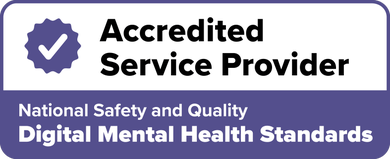How to dopamine detox? Does it help at all?
In a Nutshell
A dopamine detox does not remove dopamine from your brain. It involves stepping back from behaviours that overstimulate you and reconnecting with more intentional habits.
While scientific evidence for a complete "reset" is limited, many people find it helpful to break compulsive patterns and create more space for rest or reflection.
If constant digital input leaves you feeling overwhelmed, simple changes in your routines can help you feel calmer and more in control.
It feels almost impossible to step away from screens, social media, digital content, and other distractions. These things have been so blended into many people’s daily lives that we fail to notice when they start to become unhealthy.
Hours pass in a blur of notifications, scrolling, and multitasking, yet it's hard to remember what actually felt meaningful.
This is where dopamine detox becomes a hot topic. For those who try it, it offers a way to pause, reflect, and gently break away from habits that are no longer helpful. Let’s dive deeper into it through the next sections.
What does dopamine detox really mean?
Despite the name, a dopamine detox does not lower the amount of dopamine in your brain. Dopamine is a natural chemical that supports motivation, learning, and reward. You need it to function well.
The original concept was never about avoiding all pleasure. It came from clinical psychology and aimed to help people take intentional breaks from behaviours that become compulsive. These include things like endless scrolling, binge watching, or checking your phone over and over again.
You might notice you do these things out of habit, even when they don’t feel good. A dopamine detox helps create space between the impulse and the behaviour, so you can decide what to do next.
Unfortunately, some people promote more extreme versions that involve avoiding everything stimulating, including music, eye contact, or even talking. These approaches are not supported by research and can be harmful.
The most useful version is one that helps you reflect on your habits, take a small step back and try activities that feel slower, calmer, and more meaningful.
Why this matters
Australians are spending more time and more time on screens. A report on screen time statistics by Red Search showed that adults are on digital devices for more than six hours each day. The Australian Bureau of Statistics also found that people over 15 spend more than five hours daily on “free time” activities, much of which includes screen time.
This constant exposure to stimulation can change how you experience everyday life. Tasks like walking, cooking, or reading might start to feel flat. You might find it harder to stay focused or enjoy quiet moments.
If you are reaching for your phone without thinking or using it to fill every gap in your day, your attention may be operating on autopilot. Taking short breaks from these habits can help you reconnect with what your body and mind actually need in those moments.
So does dopamine detox really work?
Not in the way most people think. You can’t reset or flush out dopamine by avoiding stimulation. Dopamine is a natural and necessary chemical that supports motivation and learning. It doesn’t build up like a toxin, and your brain doesn’t need a cleanse.
Still, the idea behind a dopamine detox has value. When you take a break from high-reward habits like scrolling or binge-watching, you give yourself space to notice how those behaviours affect your focus and mood. That pause can help you feel more present, less reactive, or even discover ways for you to enter a flow state when you need to focus.
What works is not the detox itself, but the intentional shift in behaviour. Reducing impulsive habits and choosing slower, more meaningful activities can support emotional balance and clearer thinking. It’s less about cutting dopamine and more about changing the rhythm of your day.
What to do instead?
If you want to reduce overstimulation and feel more in control, these four steps can help you begin.
1. Track your habits and triggers for a few days
Start by noticing when and why certain behaviours occur. Using a notebook or your phone, record moments when you automatically reach for a screen or other high-stimulation habits.
Note the time, the situation, what you were feeling just before, and what you were hoping to feel afterwards. This process mirrors techniques from cognitive behavioural therapy (CBT), which helps you understand how your thoughts, emotions, and actions are connected.
2. Set a clear, time-based boundary
Choose a single behaviour to pause and decide exactly when or where you will take a break from it. For example, you could put your phone away during dinner, keep it out of the bedroom at night, or avoid social media for the first hour of the day.
Keep the boundary specific and achievable. A simple, time-limited change is more effective than trying to overhaul your routine all at once.
3. Plan meaningful alternatives ahead of time
Instead of focusing only on what to avoid, choose something you will do instead. Going outside for a short walk, spending time in the garden, or even sitting quietly in fresh air can ease mental tension and support clearer thinking.
You might also consider reaching out to a friend, meeting someone for coffee, or joining a local class or community group to bring more positive social interaction into your week. You might also try journalling, reading, or preparing a meal slowly and without distractions. These quieter activities give your mind a break and help rebuild your capacity for focus.
4. Reflect, review, and adjust
After a few days, take a few minutes to reflect on how you feel. Are you sleeping better? Finding it easier to focus or enjoy downtime?
Pay attention to what changed, even slightly. Based on what you learn, adjust your approach. You might keep the same habit in place, shift your boundary to a different time, or try a new replacement activity.
When to seek more support
If you try to shift a habit and keep getting stuck, there might be more going on. Some behaviours feel impossible to change because they are linked to stress, anxiety, loneliness, or deeper patterns that need more care.
Conditions like ADHD, trauma, or compulsive behaviour can make it harder to step away from high-stimulation habits. If the behaviour is affecting your sleep, mood or relationships, or if it feels out of your control, speaking to a therapist can help.
Related: Common signs of adult ADHD
Final thoughts
Dopamine detoxing will not give you a clean slate, and it is not a quick fix. But when you take time to step away from what drains your focus, even briefly, you’ll likely find yourself feeling more grounded and able to focus on things that truly matter.
Start with a short pause, and try a different rhythm for one part of your day. Notice what happens when you do. Let it be an experiment, not a test.
And if you are feeling unsure or overwhelmed by the process, a therapist can help you understand your patterns better, the beliefs behind them, and any changes needed to help you live more intentionally each day.
Essential Reading
Free Mental Health Tests
Recommended Therapists Available Now
QLD
Psychologist
If you're feeling overwhelmed, anxious, stuck in your head, or disconnected from yourself, you're not alone. I'm Casey Barnard, a Psychologist and Health Coach who helps ...More
NT
Psychologist
Hi, Im Sean, a registered psychologist who helps adults slow down, make sense of their stress and reconnect with who they are through calm, honest, down-to-earth therapy....More
QLD
Psychologist
Welcome! I'm a General Psychologist and Psychosexual Therapist with my own private practice, Body Sense Psychology. I can help you make sense of how your body holds your ...More








